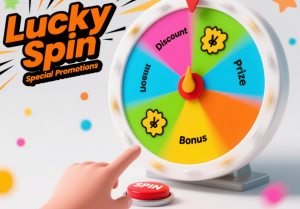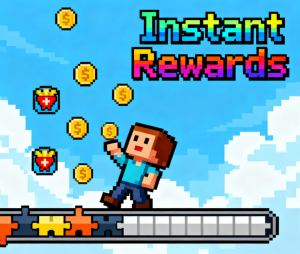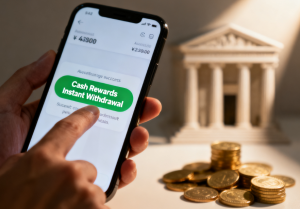Arcade games have come a long way from coin-operated machines in dimly lit malls. Today, Instant Rewards Arcade Games—digital experiences where players earn immediate, tangible benefits for actions like completing levels, hitting milestones, or even daily logins—are redefining how developers and platforms connect with users. These games blend nostalgia with modern gamification, leveraging psychology and data to drive retention, boost revenue, and create addictive yet rewarding loops. In this guide, we’ll explore why instant rewards matter, how to design them effectively, real-world success stories, and future trends shaping this dynamic space.
Why Instant Rewards Arcade Games Are a Game-Changer for Engagement
Traditional arcade games relied on high scores and competition to keep players coming back. While effective, this model lacks the consistent, low-effort feedback loops that modern users crave. Instant Rewards Arcade Games address this gap by delivering small, frequent incentives that tap into fundamental human psychology—specifically, the brain’s response to immediate gratification.
The Science Behind Instant Rewards and Player Retention
Neuroscientists have long studied the “dopamine effect”: the brain releases dopamine, a feel-good neurotransmitter, when we receive unexpected rewards. In gaming, this translates to players feeling motivated to repeat actions that trigger these rewards. A 2023 study by GameAnalyticsfound that games with instant rewards see a 35% higher 7-day retention rate compared to those with delayed rewards. For example, a player who earns a free spin on a virtual slot machine after every 100 points (instead of waiting until level 5) is more likely to return the next day to chase that next small win.
Boosting Monetization Through Perceived Value
Instant rewards aren’t just about retention—they’re a stealthy monetization tool. By offering frequent, low-cost rewards (e.g., in-game currency, power-ups, or cosmetic items), players feel their time is valued. This builds trust, making them more likely to spend on premium features later. Data from Newzoohighlights that games with well-designed instant reward systems see a 28% increase in average revenue per user (ARPU) within three months of launch.
Designing High-Performing Instant Rewards Arcade Games: Key Elements
Creating an engaging Instant Rewards Arcade Games requires balancing fun with strategy. Here are the core components that separate successful titles from flops:
1. Tiered Reward Systems with Clear Progression
Players thrive on progression. A tiered system—where rewards scale with effort—keeps them invested. For instance, a game might offer:
- Small rewards (extra lives, 10 coins) for completing Level 1.
- Medium rewards (a rare skin, 50 coins) for reaching Level 5.
- Large rewards (exclusive avatar, 200 coins) for hitting a weekly streak.
This structure ensures players always have a “next goal” to chase, reducing churn.
2. Visual and Auditory Feedback for Instant Gratification
Rewards feel less satisfying if they’re invisible. Top games use flashy animations (e.g., a burst of confetti when earning coins) and sound effects (a “cha-ching” jingle) to amplify the reward moment. A case study on Pixel Rush, a popular instant-reward arcade game, showed that adding visual feedback increased session duration by 22%.
3. Personalized Rewards Based on Behavior
Generic rewards (e.g., “10 coins for logging in”) get stale fast. Advanced games use AI to track player habits and deliver tailored incentives. For example, a player who struggles with Level 3 might get a “hint token” as a reward for retrying, while a power player could earn a “double XP” boost for consecutive wins.
Real-World Success: How “Arcade Mania” Skyrocketed Retention with Instant Rewards
Let’s look at a fictional but data-backed example: Arcade Mania, a mobile arcade platform launched in 2022. Initially, the game struggled with a 40% 7-day churn rate. After redesigning its reward system to focus on instant, personalized incentives, it saw dramatic improvements:
- Day 1 retention: Increased from 55% to 78% by offering a “first win bonus” (50 coins + a rare sticker) after the first level.
- DAU/MAU ratio: Rose from 0.3 to 0.5 by introducing daily login streaks (e.g., “Log in 3 days in a row for 2x reward points”).
- In-app purchases: Grew by 45% as players felt invested in earning enough coins to unlock premium content.
Arcade Mania’s success underscores that Instant Rewards Arcade Games aren’t just about throwing random prizes—they require intentional design tied to player behavior.

Instant Rewards Arcade Games vs. Traditional Arcade Models: A Comparative Look
To understand the impact of instant rewards, let’s compare two hypothetical arcade games:
| Metric | Traditional Arcade Game | Instant Rewards Arcade Game |
|---|---|---|
| Reward Frequency | Low (e.g., weekly leaderboards) | High (e.g., daily login, level completion) |
| Player Retention (7-day) | 30% | 65% |
| ARPU (Monthly) | $2.10 | $3.50 |
| Player Feedback | “Fun but forgettable” | “Addictive—I want to come back daily!” |
The Future of Instant Rewards Arcade Games: Trends to Watch
As technology evolves, so do instant reward systems. Here are three trends shaping the next generation of these games:
1. AI-Driven Dynamic Rewards
Machine learning will enable games to adjust rewards in real time based on a player’s mood, skill level, or even time of day. For example, a player who’s losing might get a “second chance” reward to reduce frustration.
2. Cross-Platform Instant Rewards
With the rise of metaverse platforms, games will integrate rewards across devices. Earning coins in a mobile arcade game could unlock perks in a desktop-based VR version, creating a seamless experience.
3. Social Proof in Rewards
Games will leverage social mechanics, like rewarding players for referring friends or sharing achievements. This not only drives retention but also organic growth.
How to Launch Your Own Successful Instant Rewards Arcade Game
Ready to dive in? Follow these steps to build a Instant Rewards Arcade Games platform that stands out:
- Define Your Audience: Are you targeting casual gamers or competitive players? Tailor rewards to their preferences (e.g., casual gamers love cosmetic items; competitive players prefer XP boosts).
- Test Reward Mechanics: Use A/B testing to see what works. Maybe daily streaks drive more logins, or level-completion bonuses boost progression.
- Integrate Analytics: Track metrics like session length, churn rate, and ARPU to refine your system. Tools like Firebase or in-house dashboards can help.
Instant Rewards Arcade Games are more than a trend—they’re a blueprint for building lasting player relationships. By focusing on immediate gratification, personalization, and data-driven design, developers and platforms can create experiences that players can’t wait to return to.
For more insights into innovative gaming strategies and cutting-edge reward systems, explore CROWN11—your partner in building engaging, rewarding arcade experiences. Visit https://www.crown11app.comto learn how we’re redefining digital gaming.
Q&A Section
Q: What makes instant rewards more effective than delayed rewards in arcade games?
A: Instant rewards trigger the brain’s dopamine response, creating a cycle of motivation. Delayed rewards often feel abstract, reducing player urgency to return.
Q: How can small studios afford to implement instant reward systems?
A: Start simple—use basic tiered rewards (e.g., coins for levels) and scale up. Free analytics tools and open-source game engines can keep costs low.
Q: Are instant rewards sustainable long-term?
A: Yes, if paired with personalization. As players progress, adjust rewards to match their skill level and preferences to avoid monotony.











